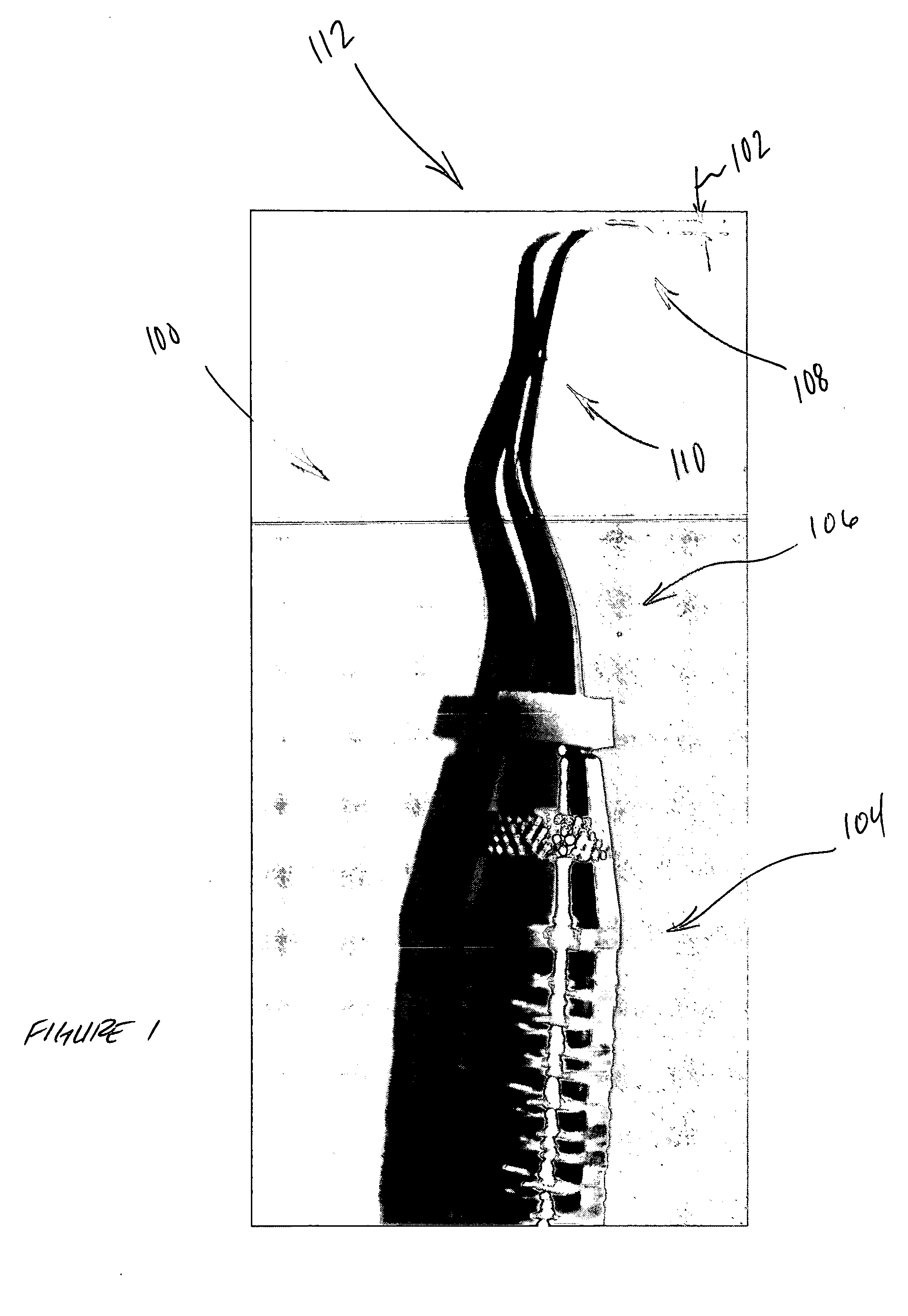Coated dental instruments
a dental instrument and coating technology, applied in the field of dental instruments, can solve the problems of tooth damage, difficult cleaning, tooth damage, etc., and achieve the effects of enhancing the longevity of dental instruments, increasing their functionality, and facilitating the removal of organic materials
- Summary
- Abstract
- Description
- Claims
- Application Information
AI Technical Summary
Benefits of technology
Problems solved by technology
Method used
Image
Examples
Embodiment Construction
[0019] As should be understood in view of the following detailed description, this application is primarily directed to, though not necessarily limited to, coated dental instruments, such as, for example, dental scalers, files, burrs, and reamers used to cut (inside or on the surface), drill and / or clean the natural tooth surface.
I. Reduced Friction Coated Dental Scalers
[0020] Calculus is a rough, porous, and plaque-retentive substance that adheres to the root surface of a tooth. Dental scalers are devices that are used to remove calculus from the a tooth. A scaler can be hand driven and / or mechanically driven (e.g., ultrasonic and sonic) for easy removal of calculus from deep within the periodontal pocket.
[0021]FIG. 1 illustrates an exemplary embodiment a scaler 100. As is typical in the art, the scaler 100 is configured be placed between a tooth and surrounding gum and bone. In this embodiment, the scaler 100 may be vibrated to remove calculus deposits bonded to the tooth witho...
PUM
 Login to View More
Login to View More Abstract
Description
Claims
Application Information
 Login to View More
Login to View More - R&D
- Intellectual Property
- Life Sciences
- Materials
- Tech Scout
- Unparalleled Data Quality
- Higher Quality Content
- 60% Fewer Hallucinations
Browse by: Latest US Patents, China's latest patents, Technical Efficacy Thesaurus, Application Domain, Technology Topic, Popular Technical Reports.
© 2025 PatSnap. All rights reserved.Legal|Privacy policy|Modern Slavery Act Transparency Statement|Sitemap|About US| Contact US: help@patsnap.com



